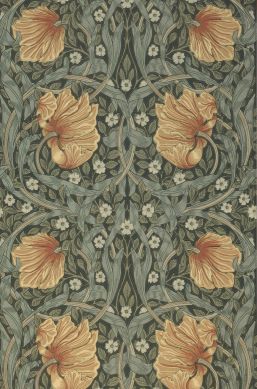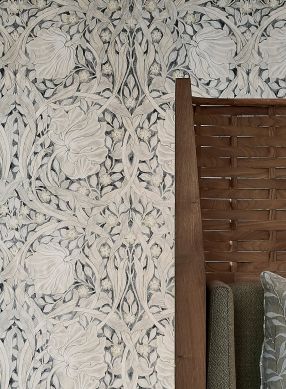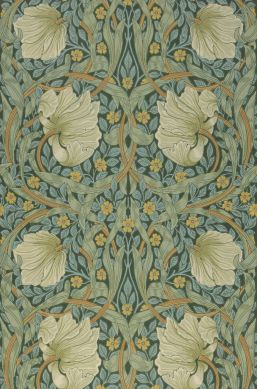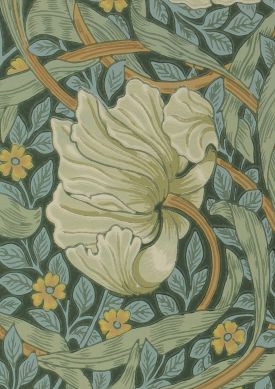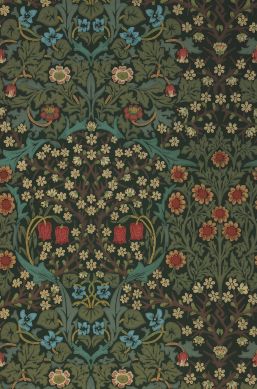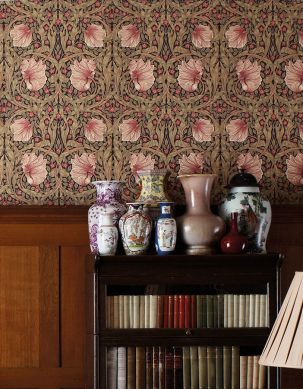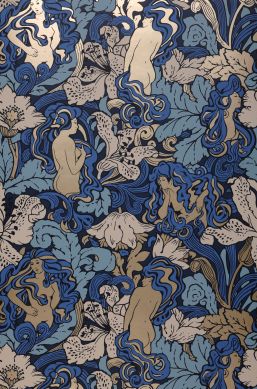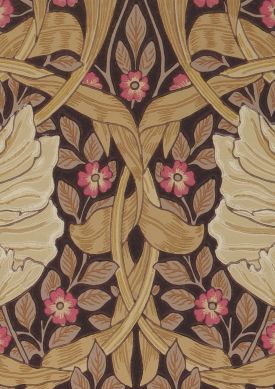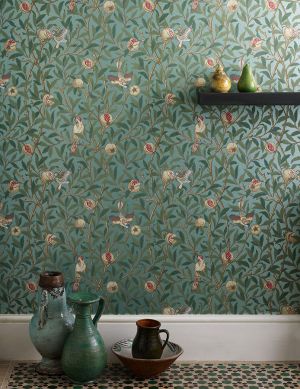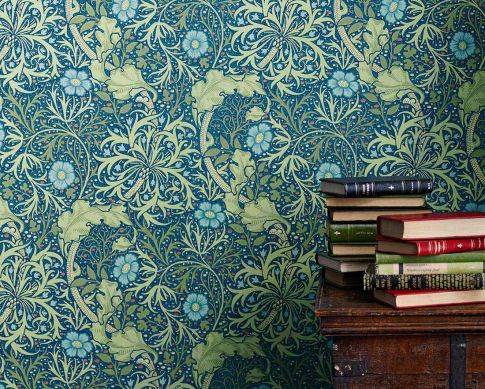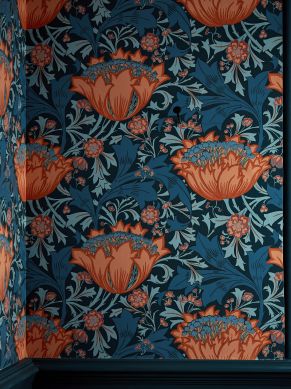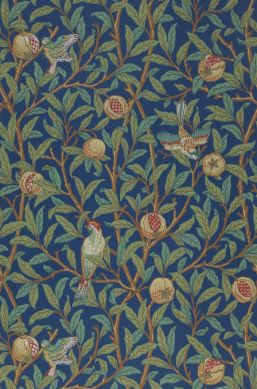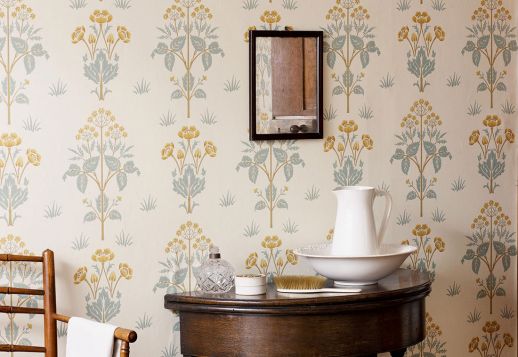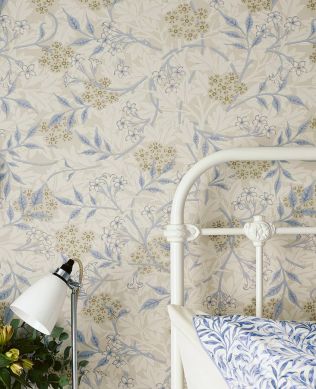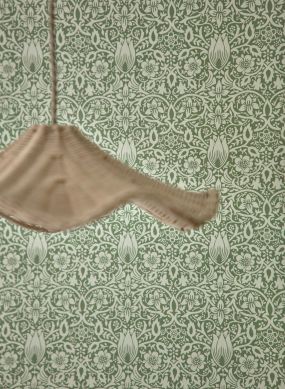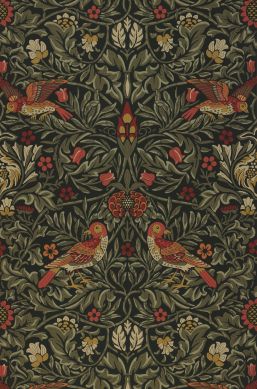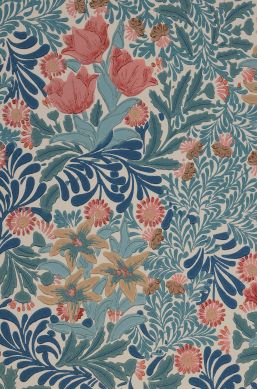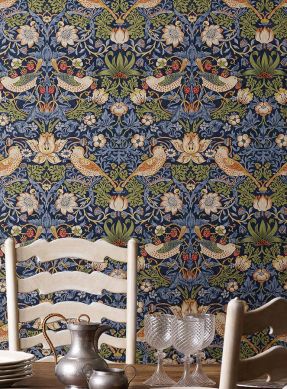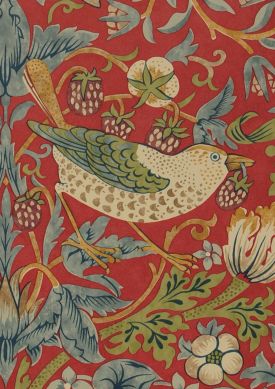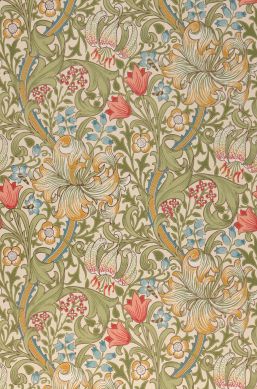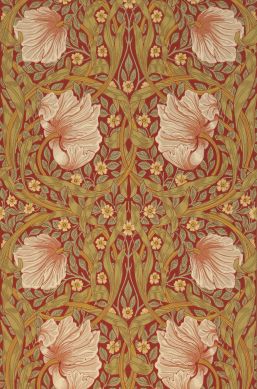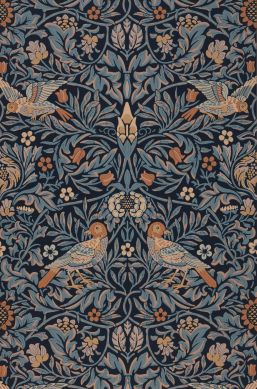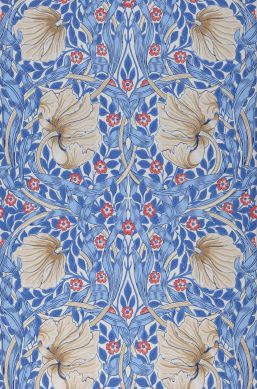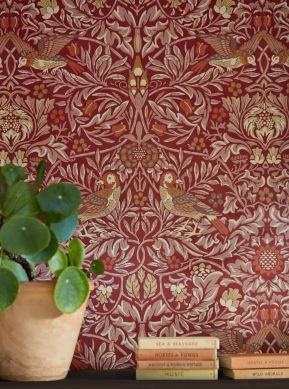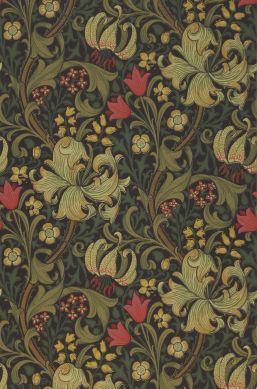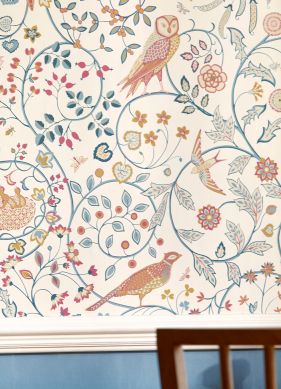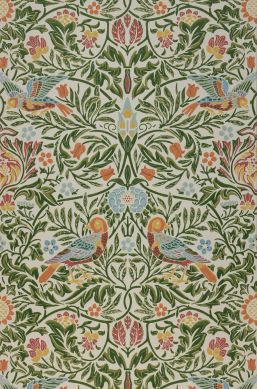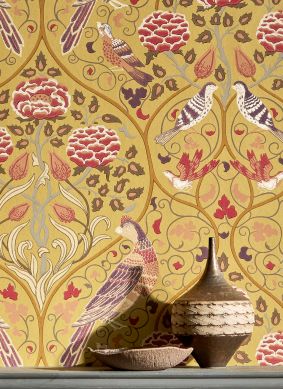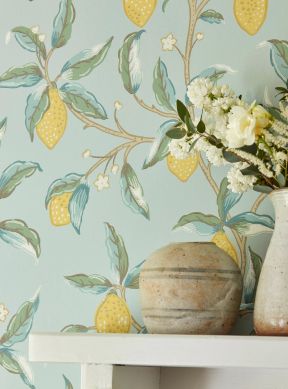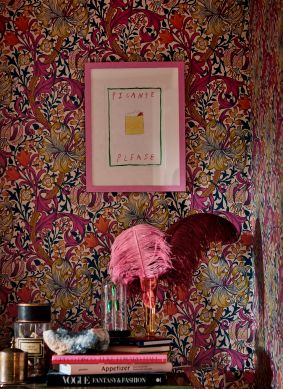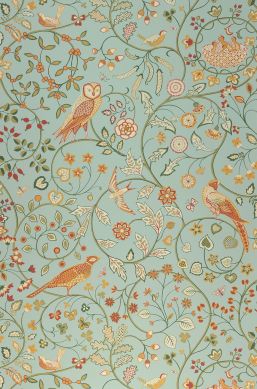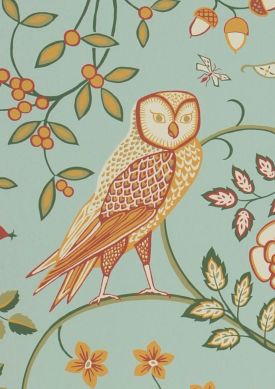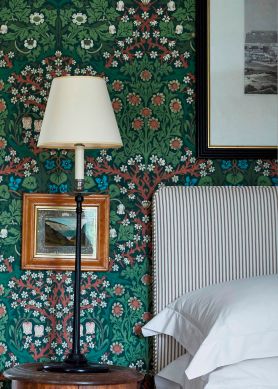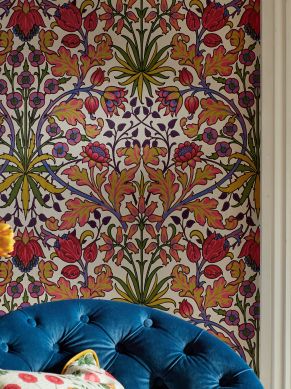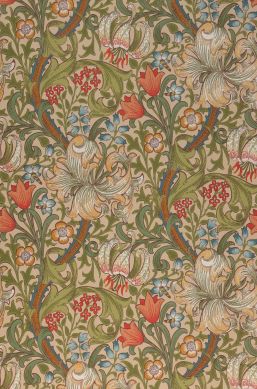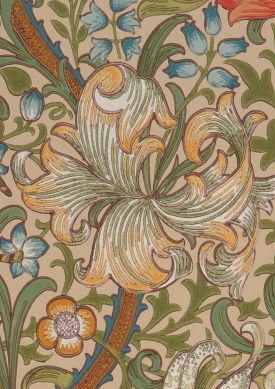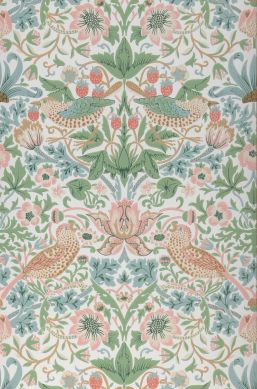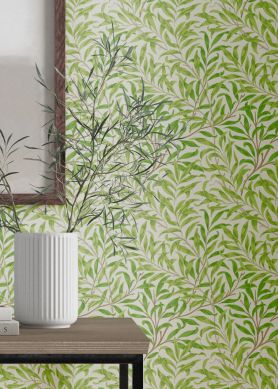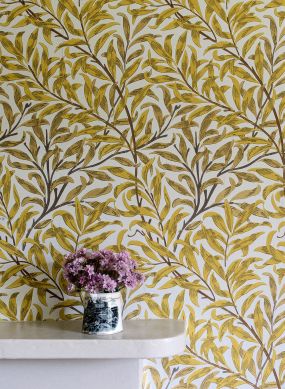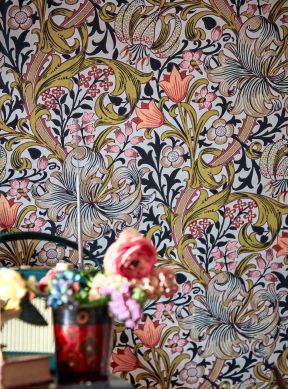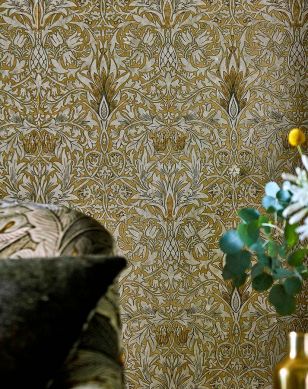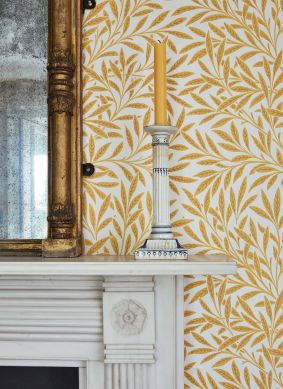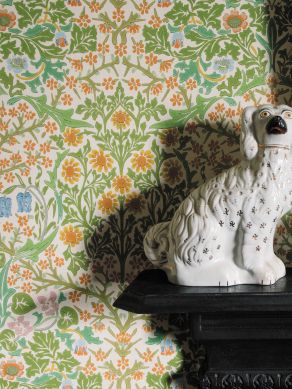William Morris Wallpaper
William Morris Wallpaper: The Guide
“Whatever you have in your rooms, think first of the walls, for they are that which makes a house a home.” Writer, artist, novelist, social activist, and textile designer William Morris was a cornerstone of the Arts and Crafts movement, which transformed the way Victorian Britain looked at interior design. An iconic figure of his time, he rejected the “dehumanising” ideals and “poor-quality” products brought by the industrial era, championing instead a handmade, artisanal approach to production. His motifs were based on his close observation of nature and are all centred on plant-based shapes. Nature is depicted in a luxuriant yet stylised way which evokes its forms rather than being a literal transcription. His wallpaper designs, produced under his close supervision by the Morris & Co company, remain as iconic as ever.
Table of Contents
- Who was William Morris?
- Why is William Morris’ work associated with the Arts and Craft movement?
- What are the most famous patterns of William Morris textiles and wallpapers?
- What are the most popular colours for Morris & Co. wallpapers?
Who was William Morris?
William Morris is one of 19th Century’s most famous artists and textile designers, as well as one of the leading figures of the celebrated Arts and Crafts movement. His iconic wallpapers designs are still produced today under the Morris & Co brand, following in the footsteps of the wallpaper and textiles factory he founded back in 1875.
Textile designer, poet and artist of Victorian Britain
Born in London in 1834 into a wealthy family, William Morris dedicated his life to exploring the fields of design, craftsmanship, poetry, and textile production, thus revolutionising the Victorian taste zeitgeist with his creations. Recognised as one of the most significant cultural figures of his time, Morris had a keen interest in politics and championed the end of class division in British society, helping to set up the Socialist League.
Founder of Morris & Co.
Having achieved surprising success and public acclaim decorating his own home (the famous “Red House” in Bexleyheath) with large murals and hand-embroidered fabrics, William Morris founded Morris & Co in 1875. In contrast to Victorian Britain’s passion for industrial progress, he championed craftsmanship and hand-made products, convinced that design and production had to go hand in hand. Morris & Co had a profound impact on wall design which lasted well into the 20th century.
William Morris created fifty different block-printed wallpapers
Always interested in traditional textile production, William Morris was well aware of the growing popularity of wallpaper in British society and decided to design his own models for Morris & Co, inspired by English gardens and fields. As a result of his interest in traditional printing and dyeing methods, he brought back long abandoned techniques and carved - by hand - over 50 printing blocks of pear wood for his natural and repeating patterns which he then printed using only natural dyes.
Why is William Morris’ work associated with the Arts and Crafts movement?
William Morris’ focus on recapturing the spirit and skills of medieval craftsmanship made him a leading light of the Arts and Crafts movement, a British trend rejecting the poor quality and banality of decoration produced by the modern Industrial society.
Main influencers on the Arts and Crafts design reform
The Arts and Crafts aesthetic movement emerged with aplomb after the Great Exhibition (1851) in London, which boasted industrially produced ornaments and decorations, perceived by many to be soulless and of inferior quality. This critique was championed by Augustus Pugin and John Ruskin, who believed that the industrial division of labour had created large, untrained masses of poor people. They promoted a return to independent artisans who were able to design the objects that they manufactured.
Emphasising nature and the simplicity of form
Rejecting the excessive, overly ornate, and artificial goods machine-produced in factories, Morris believed that such products were “vulgar”, lacking both art and beauty. He despised overly accurate, almost “photographic” art, preferring a simpler style, focused on natural forms depicted with a palette of strong colours. In line with his focus on craftsmanship, Morris stated he had to first master each technique and understand each material personally before it could be put into production in his factory.
Leaves, fruits, and flowers
A passionate lover of local parks and woods, Morris always had a particular affinity with British flora, a fact that is reflected in his choice of patterns and motifs. In contrast with the complex exoticism that was prevalent in the Victorian era, Morris focused on common plants he saw in English gardens and fields, depicting simple, stylised leaves, roses (like in his very first wallpaper “Trellis” from 1862), fruits or birds typical for the British Isles.
What are the most famous patterns of William Morris textiles and wallpapers?
William Morris’ approach to patterns is best represented by the wallpaper models Pimpernel, Golden Lily, Strawberry Thief, and Willow. They incorporate the “clearness of form and firmness of structure” that made his designs a timeless classic in interior decoration.
Pimpernel
Perhaps the most celebrated of his designs, Pimpernel was one of the first wallpapers produced by Morris & Co and used to decorate Morris’ own dining room at Kelmscott House. It’s a classic floral wallpaper that depicts large flower heads (the pimpernels) moved by the wind and surrounded by an intricate yet symmetrical background of green leaves and small yellow flowers.
Strawberry Thief
Widely considered one of Morris’ best works, “Strawberry Thief” was originally created for a fabric in 1883. The idea behind the motif came to Morris after watching thrushes stealing fruits from the kitchen garden of his countryside home in Oxfordshire. The pattern, a stunning symmetrical combination of both strawberries and thrushes, was originally printed using the indigo discharge method, Morris’ preferred form of printing.
Willow
Always fond of the romantic quality of the willow, a tree he often encountered on his countryside walks, Morris used its leaves, branches, and flowers as a source of inspiration in several of his motifs. Perhaps the most famous and iconic is the eponymous “Willow” pattern, designed in 1874 as a stylised representation of sinuous willow branches, depicted in subtle, almost muted colour hues.
Golden Lily
The only motif of this selection which was produced by Morris & Co but not designed personally by William Morris, “Golden Lily” nevertheless represents perhaps the most enduring legacy of his style. Created by John Henry Dearle in 1897, who took over the company following Morris' death in 1896, this pattern features tiny lily stems, red tulips and tendrils intertwined in a timeless classic.
What are the most popular colours for Morris & Co. wallpapers?
Due to his penchant for representing English nature and his longing for a romantic past, it’s not surprising that William Morris patterns feature soft, delicate colour gradients. He favoured green blue and gold tones, based on distemper paint to mirror those found in the British countryside.
Green
William Morris is best known for being the modern pioneer of bringing the natural world indoors; the name of his most famous patterns and wallpapers are a clear testament to it. It is therefore not surprising that shades of green feature so frequently in his fabrics. His work is a symphony of green - from blue-green Verdigris to yellow-green Chartreuse. A mastery of muted, natural tones that can instil any room with a sense of calm and relaxation.
Blue
The colour blue, used in its darker yet chalky, muted tonality, was often used by William Morris either as a background colour, like in his celebrated “Sunflower” wallpaper, or to highlight the beauty of springtime blooms and wildflowers. Known to be a regal colour, it’s no surprise that it was used to create the wallpaper for Balmoral castle. Today, many of William Morris’ most celebrated wallpapers are available in this statement shade.
Gold
A colour that suggests both royal glamour and the spiritual power of the sun, gold has often been used by William Morris for its close association with other ancient and precious pigments of a bygone era. Sometimes combined with indigo, red and green, it has been used increasingly frequently in modern renditions and imitations of William Morris’ classic masterpieces.


